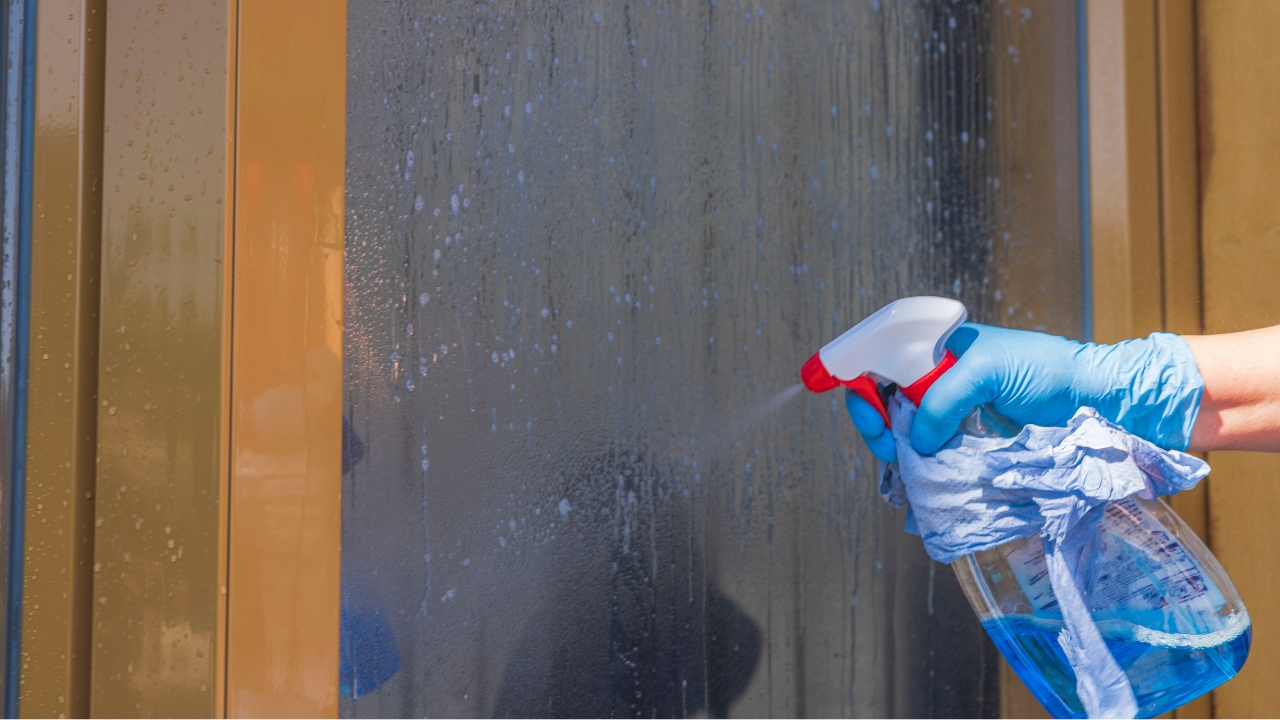10 Products You’re Using That Are Ruining Your Surfaces
Not every product that says “multi-surface” should go on every surface. In fact, a lot of common household cleaners can quietly break down finishes, stain countertops, or wear away at the materials you’re trying to protect.
Sometimes it’s a pH issue, sometimes it’s abrasion, and sometimes it’s the result of using the right product in the wrong spot. Either way, if your surfaces are looking dull, scratched, sticky, or streaky, one of these products might be the reason why.
Bleach on Stone Countertops

Bleach might feel like the heavy hitter of disinfectants, but it’s too harsh for natural stone. It can cause etching, dull the surface, and strip away any sealant your counters had protecting them.
If you’ve got granite, marble, or quartz, stick with a pH-neutral cleaner designed for stone. Even a gentle dish soap and warm water is a safer bet. Save the bleach for laundry and bathroom mildew—not your kitchen surfaces.
Vinegar on Hardwood Floors

Vinegar is everywhere in DIY cleaning hacks, but it’s too acidic for hardwood. Over time, it can wear down the finish, making your floors look cloudy or uneven.
If you’re mopping hardwood, use a cleaner made for wood floors or plain water with a small amount of dish soap. A microfiber mop helps cut grime without stripping the finish. Vinegar belongs in your salad dressing—not on your floors.
Magic Erasers on Glossy or Painted Surfaces

Magic erasers are basically superfine sandpaper. They’re great for scuffs, but on glossy paint, polished surfaces, or appliances, they’ll leave behind dull spots or even scratches.
Before you reach for one, think about what you’re cleaning. Try a damp cloth with dish soap first. Magic erasers should be your last resort—not your go-to—for anything with a finish that can be dulled or damaged.
Furniture Polish with Silicone

Many traditional furniture polishes contain silicone, which creates a slick, shiny look at first. But over time, it builds up, traps dust, and leaves behind a sticky residue that’s hard to clean off.
You don’t need a fancy product to keep wood looking good. A slightly damp microfiber cloth works fine for regular upkeep, and the occasional use of a polish without silicone can help if your wood is dry. Skip the silicone-based sprays.
Windex on Tinted Windows

Regular glass cleaner with ammonia can damage window tint. It breaks down the film’s adhesive and causes it to bubble or peel, especially around the edges.
If you’ve got tinted windows—on your car or in your home—use a tint-safe cleaner labeled as ammonia-free. Even a mixture of water and a little dish soap can get the job done without destroying the tint.
Baking Soda on Stainless Steel

Baking soda seems harmless, but it’s actually abrasive. When you scrub stainless steel with it, you can leave behind tiny scratches that dull the finish and trap grime.
Stick to soft cloths and cleaners designed for stainless steel. Wipe in the direction of the grain, and dry it off after cleaning to prevent water spots. Baking soda has its place, but it’s not the best fit here.
Hydrogen Peroxide on Colored Grout

Hydrogen peroxide is a great stain remover, but it can bleach or fade colored grout over time. If your grout lines aren’t bright white to begin with, peroxide might make them patchy or uneven.
Use a grout cleaner that’s safe for colored grout or try a baking soda paste instead. And always test a small area first before applying anything new across a big section.
Disinfecting Wipes on Leather

Disinfecting wipes are everywhere these days, but they’re loaded with alcohol and other chemicals that dry out leather fast. Regular use can crack the surface and dull the finish.
Leather needs moisture and conditioning, not harsh chemicals. Use a cleaner specifically made for leather or a damp cloth followed by a leather conditioner. Keep the wipes for hard surfaces like doorknobs and counters.
Oven Cleaner on Stove Tops

Oven cleaner is way too harsh for glass or enamel stovetops. It can cause discoloration, damage the surface, or even pit the glass if left on too long.
For your stove, use a cleaner labeled safe for stovetops or try a mix of dish soap and baking soda. Let it sit, then gently scrub with a soft sponge. Avoid anything too harsh unless you’re cleaning inside the oven.
Essential Oils on Wood Furniture

Essential oils smell great, but when used directly on wood, they can stain or react with the finish. Citrus oils, in particular, are acidic and can break down certain coatings.
If you want a natural cleaner, mix a few drops of essential oil into a water-based solution, but don’t apply them straight to surfaces. And always check that the oil won’t react poorly with your wood finish before using it.
*This article was developed with AI-powered tools and has been carefully reviewed by our editors.







